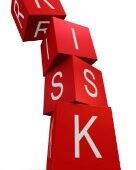
Risk Assessments: Benefits of Risk Reduction
Health and Safety Executive (HSE) say that Risk Assessments are an integral part of any organisation’s health and safety management system. but what is a Risk Assessment? A Risk Assessment is a systematic process of identifying hazards, evaluating those hazards and then controlling those health and safety risks in the workplace.
What is a Risk Assessment in HSE?
A Risk Assessment in HSE involves a detailed examination of various workplace aspects. These include the activities conducted, the equipment and machinery used, the chemicals and substances handled, the physical environment, and the employees involved.
HSE Risk Assessment Process and Steps
The HSE Risk Assessment process involves a thorough examination of the workplace, including the activities that take place, the equipment and machinery used, the chemicals and substances used, the physical environment and the employees who work there.

The objective of a Risk Assessment is to reduce the likelihood of harm occurring to employees, customers, suppliers and other stakeholders that might come into contact with your activities. By reducing the likelihood of harm, organisations can prevent accidents from happening, minimise damage to property and equipment, and minimise the cost of insurance claims and compensation payments.
The Benefits of Effective HSE Risk Assessment Techniques
Improved Health and Safety Culture
When organisations implement effective risk reduction measures, employees become more aware of the dangers in the workplace and take steps to minimise the risk of harm. This leads to a better health and safety culture, where everyone is committed to working safely.
Increased Productivity
When employees are protected from harm, they are less likely to take time off work due to injury or ill health. This means that organisations can operate at full capacity, maximising productivity and profits.
Improved Reputation
Organisations that have a good health and safety record are seen as responsible and trustworthy by customers, suppliers and other stakeholders. This can help to build a positive reputation and increase the organisation’s market share.
Cost Savings
Effective risk reduction measures can help organisations to reduce the cost of insurance premiums, compensation payments and legal fees. By reducing the likelihood of harm occurring, organisations can save money in the long term.
Compliance with Legislation
Organisations are required by law to manage health and safety risks in the workplace. By conducting HSE Risk Assessments and implementing effective risk reduction measures, organisations can demonstrate their compliance with health and safety legislation.
Risk Assessment in HSE
The process of risk assessment in HSE involves several key steps, each of which plays a vital role in ensuring the safety and health of employees in various work environments.
What are the Five Steps to a Risk Assessment?
The HSE Risk Assessment process can be broken down into several stages as defined by the Health and Safety Executive (HSE)
1. Identification of Hazards: The first stage of the HSE Risk Assessment process is to identify all of the hazards in the workplace. Hazards are any factors that have the potential to cause harm.
2. Evaluation of Risks: The next stage is to evaluate the risks associated with each hazard. This involves considering the likelihood of harm occurring, and the severity of harm if it does occur.
3. Control of Risks: The third stage is to control the risks associated with each hazard. This involves implementing measures to reduce the likelihood of harm occurring, or to minimise the severity of harm if it does occur.
Helping you to understand what reasonably practicable means this phrase is a key driver in a lot of health and safety legislation
You need to put the controls that you have identified in place. the HSE do not expect you to eliminate all risks but you need to do everything that is ‘reasonably practicable’ to protect people from being harmed. This means balancing the level of risk against the measures needed to control the real risk in terms of money, time or trouble.
You can find more detailed guidance on the HSE website here.
4. Record your findings
If you employ 5 or more people, you must record your significant findings, including.
- the hazards (things that may cause harm)
- who might be harmed and how
- what you are doing to control the risks
To help you and give guidance on risk assessments the HSE have templates and examples that you can view here.
The HSE also say that the reliance on paperwork should not be your main priority but to control the risks in practice and ass the work is happening.
5. Monitoring and Review
The final stage is to monitor and review the effectiveness of the risk reduction measures. Organisations should regularly check that the measures they have implemented are working as intended, and make any necessary changes to ensure continued effectiveness.
In conclusion, the HSE Risk Assessment process is a vital tool for organisations to minimise the risk of harm to employees, customers, suppliers and other stakeholders. By reducing the likelihood of harm, organisations can improve their health and safety culture, increase productivity, build a positive reputation, save money, and comply with legislation.
By conducting regular HSE Risk Assessments and implementing effective risk reduction measures, organisations can ensure that their workplace remains safe and secure for everyone.
HSE Risk Assessment Process

Balancing Risk and Practicability
An essential aspect of health and safety legislation is the concept of ‘reasonably practicable’. This means balancing the level of risk against the measures necessary to control the real risk in terms of money, time, or trouble. The expectation isn’t to eliminate all risks but to do everything ‘reasonably practicable’ to protect people from harm.
Why Choose Southwest Health and Safety?
In a sea of health and safety training providers, Southwest Health and Safety stands out, not just for its comprehensive course offerings, but for its unwavering commitment to quality and excellence. Here’s why you should make Southwest your first choice:
- Industry Expertise: Southwest Health and Safety boasts a team of seasoned professionals who bring real-world experience into the classroom, e-learning, and virtual courses. Their depth of knowledge ensures that learners are not just equipped with theoretical understanding, but also practical insights that can be applied immediately.
- Flexible Learning Modes: Whether you prefer traditional classroom learning, the convenience of e-learning, or the dynamic environment of a virtual course, Southwest offers it all, ensuring every learner finds a method tailored to their needs.
- Outstanding Support: From the moment you enroll until you receive your certification, Southwest provides unparalleled support. Queries are addressed promptly, and additional resources are always at the ready to aid in your learning journey.
- High Success Rate: With an impressive track record of students successfully passing their examinations, Southwest Health and Safety’s teaching methods have proven their efficacy time and time again.
- Value for Money: Quality education doesn’t have to break the bank. Southwest Health and Safety offers competitive pricing without compromising on the caliber of training.
Choosing the right training provider can be the difference between merely passing an exam and truly understanding and applying health and safety principles in real-world contexts. With Southwest Health and Safety, you’re not just making a choice; you’re making an investment in your future.

Tags: Risk Assessment